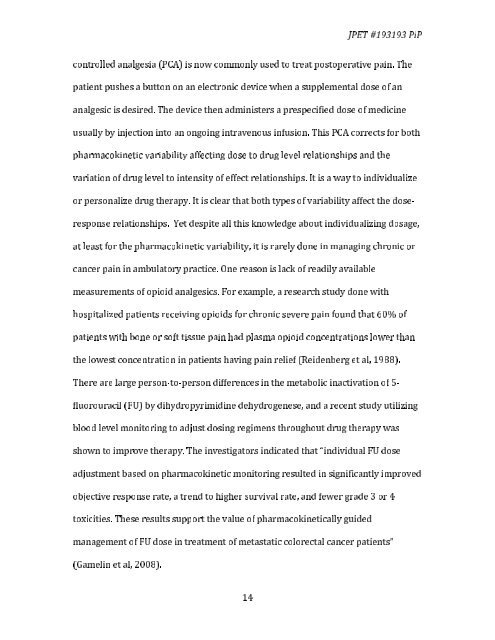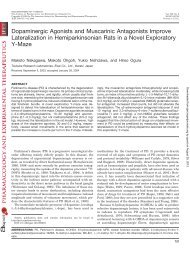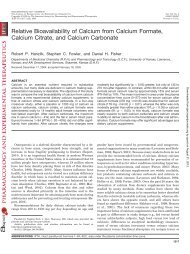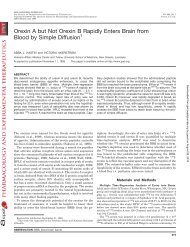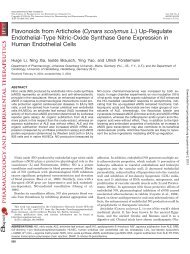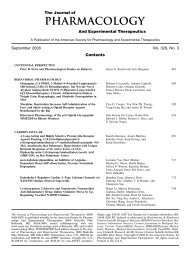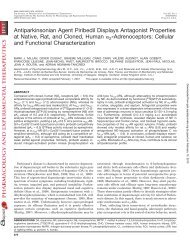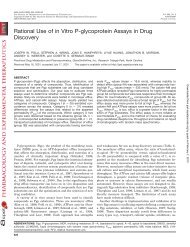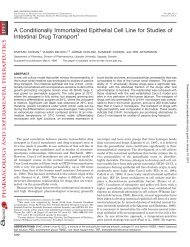Title Page Cigarette Smoking, Coffee Drinking, and Ingestion of ...
Title Page Cigarette Smoking, Coffee Drinking, and Ingestion of ...
Title Page Cigarette Smoking, Coffee Drinking, and Ingestion of ...
Create successful ePaper yourself
Turn your PDF publications into a flip-book with our unique Google optimized e-Paper software.
14<br />
JPET #193193 PiP<br />
controlled analgesia (PCA) is now commonly used to treat postoperative pain. The<br />
patient pushes a button on an electronic device when a supplemental dose <strong>of</strong> an<br />
analgesic is desired. The device then administers a prespecified dose <strong>of</strong> medicine<br />
usually by injection into an ongoing intravenous infusion. This PCA corrects for both<br />
pharmacokinetic variability affecting dose to drug level relationships <strong>and</strong> the<br />
variation <strong>of</strong> drug level to intensity <strong>of</strong> effect relationships. It is a way to individualize<br />
or personalize drug therapy. It is clear that both types <strong>of</strong> variability affect the dose-<br />
response relationships. Yet despite all this knowledge about individualizing dosage,<br />
at least for the pharmacokinetic variability, it is rarely done in managing chronic or<br />
cancer pain in ambulatory practice. One reason is lack <strong>of</strong> readily available<br />
measurements <strong>of</strong> opioid analgesics. For example, a research study done with<br />
hospitalized patients receiving opioids for chronic severe pain found that 60% <strong>of</strong><br />
patients with bone or s<strong>of</strong>t tissue pain had plasma opioid concentrations lower than<br />
the lowest concentration in patients having pain relief (Reidenberg et al, 1988).<br />
There are large person-to-person differences in the metabolic inactivation <strong>of</strong> 5-<br />
fluorouracil (FU) by dihydropyrimidine dehydrogenese, <strong>and</strong> a recent study utilizing<br />
blood level monitoring to adjust dosing regimens throughout drug therapy was<br />
shown to improve therapy. The investigators indicated that “individual FU dose<br />
adjustment based on pharmacokinetic monitoring resulted in significantly improved<br />
objective response rate, a trend to higher survival rate, <strong>and</strong> fewer grade 3 or 4<br />
toxicities. These results support the value <strong>of</strong> pharmacokinetically guided<br />
management <strong>of</strong> FU dose in treatment <strong>of</strong> metastatic colorectal cancer patients”<br />
(Gamelin et al, 2008).


